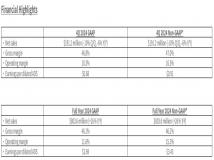本篇分享了Nginx服务器使用log_format指令设置日志格式,希望对于初学Nginx服务器相关的朋友有帮助,更多Nginx安装、配置、报错处理等资源请本站内搜索。。
#vim /usr/local/nginx/conf/nginx.conf
log_format access ‘$remote_addr – $remote_user [$time_local] “$request” ‘‘$status $body_bytes_sent “$http_referer” ‘‘”$http_user_agent” $http_x_forwarded_for’;
include /usr/local/nginx/conf/vhost/*.conf;
2、vhost中配置文件
#vim /usr/local/nginx/conf/vhost/web.conf
server
{
listen 80 default;
server_name www.server110.com;
index index.html index.htm index.php;
root /data/httpd/server110.com;
location ~ .*.php?$
{
include fastcgi.conf;
fastcgi_pass 127.0.0.1:9000;
fastcgi_index index.php;
}
location ~ .*.(gif|jpg|jpeg|png|bmp|swf)$
{
expires 30d;
}
location ~ .*.(js|css)?$
{
expires 1h;
}
access_log /usr/local/nginx/logs/access.log access;
}
3、相关说明解释
1.$remote_addr 与$http_x_forwarded_for 用以记录客户端的ip地址;
2.$remote_user :用来记录客户端用户名称;
3.$time_local : 用来记录访问时间与时区;
4.$request : 用来记录请求的url与http协议;
5.$status : 用来记录请求状态;成功是200,
6.$body_bytes_s ent :记录发送给客户端文件主体内容大小;
7.$http_referer :用来记录从那个页面链接访问过来的;
8.$http_user_agent :记录客户端浏览器的相关信息;
声明: 此文观点不代表本站立场;转载须要保留原文链接;版权疑问请联系我们。








